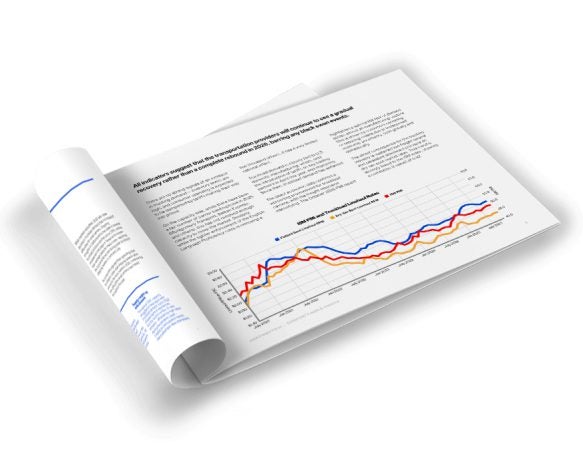Every day, countless goods and products are transported across cities, countries, and continents, ensuring that businesses can thrive and consumers can access the products they need. However, behind this seemingly seamless operation lies a world of complexity, filled with industry-specific jargon and a multitude of shipping options. For shippers, understanding the fundamentals of freight shipping is essential for making informed decisions that drive efficient and cost-effective logistics operations.
In this comprehensive guide to freight shipping, we will demystify key terms and lingo used in the industry and provide you with a roadmap to navigate the various freight shipping methods available. From full truckload transporting to intermodal shipping and beyond, we’ll equip you with the knowledge you need to make the most of freight transportation.
The ABCs of freight shipping
Before we dive into the specific types of freight shipping methods and modes of transport, let’s begin with the basics. What is freight shipping, and why is it so essential for businesses and the global economy?
Freight shipping, also known as cargo transportation, is the process of moving goods from one location to another, typically using various modes of transport, such as trucks, trains, ships, or airplanes. This process is integral to supply chains, ensuring that products reach their intended destinations efficiently and cost-effectively.
The global economy relies heavily on freight shipping to function smoothly — in fact, it’s the backbone of supply chains worldwide. Without efficient transportation, businesses would struggle to source raw materials, manufacture products, and distribute them to consumers. Freight shipping also enables companies to access markets far beyond their local boundaries, fostering international trade and economic growth. From truck drivers and warehouse workers to logistics professionals and freight brokers, the freight industry also provides millions of jobs across the globe, further fueling the global economy.
The five types of freight shipping
To cater to the diverse needs of businesses and industries, freight shipping is available in a variety of transport options, including:
- Full truckload (FTL or TL): TL shipping involves the transportation of goods that fill an entire truck, typically from a single shipper. This type of shipping is ideal for large shipments that require dedicated use of a truck. TL shipments are often more cost-effective for high-volume cargo.
- Partial truckload (PTL): PTL, also known as volume LTL, is a middle ground between TL and LTL. It is suitable for shipments that don’t require a full truck but are too large for traditional LTL. PTL offers cost savings compared to TL while providing more space than LTL.
- Less-than-truckload (LTL): LTL shipping involves consolidating shipments from multiple shippers into a single truck. This is a cost-effective option for smaller shipments that don’t require an entire truck. LTL carriers charge based on the space occupied by the cargo, making it economical for smaller businesses.
- Intermodal shipping: Intermodal shipping involves the use of multiple modes of transportation, such as trucks, trains, and ships, to move cargo. It is particularly useful for long-distance and international shipments, offering cost savings and environmental benefits.
- Expedited shipping: Expedited shipping is all about speed and is reserved for time-sensitive deliveries. This type of shipping often involves dedicated transportation and prioritized handling to meet tight deadlines.
Understanding the distinctions between these types of freight shipping is crucial for shippers to select the most suitable option for their specific needs. Each type has its advantages and drawbacks, with the ideal option for your shipping needs dependent on factors like shipment size, urgency, and budget.
Modes of freight transport
Once you’ve decided on the type of freight shipping that aligns with your requirements, consider the modes of transport available within that category. Here are a few primary modes of freight transport you’ll encounter:
- Dry van: Dry van LTL shipping is the most common mode of transportation in the freight industry. It involves the use of enclosed trailers to protect cargo from external elements. Dry van LTL trailers are versatile and can accommodate a wide range of products, making them suitable for various industries.
- Reefer: Reefer, short for refrigerated, shipping is designed to transport temperature-sensitive goods. These refrigerated trailers maintain specific temperature ranges for optimal temp-control, ensuring the integrity and freshness of products like perishable food items, pharmaceuticals, and chemicals.
- Flatbed: Flatbed LTL shipping utilizes open trailers with no sides or roof, allowing for easy loading and unloading of oversized or irregularly shaped cargo. It’s commonly used for transporting construction equipment, machinery, and building materials.
- Box trucks: Box trucks are smaller, enclosed vehicles that are often used for local or regional deliveries. They are suitable for transporting smaller loads and offer added protection compared to open trailers.
- Specialized trailers: Specialized trailers are tailored to specific cargo requirements. These trailers come in various designs, such as drop-deck, lowboy, and curtain-side, to accommodate oversized or uniquely shaped goods.
Freight shipping rate types
Now that we’ve covered the types of freight shipping methods and modes of transport, let’s delve into the intricacies of freight rates. The cost of shipping goods is a critical factor for businesses, and understanding the different types of freight rates is essential for budgeting and negotiating effectively. There are five main rates to be aware of:
- Dedicated contract rates: Dedicated contract rates are negotiated agreements between shippers and carriers for long-term commitments. These contracts typically cover a specific volume of shipments over an extended period, offering stability and predictable pricing.
- Annual contract rates: Annual contract rates are similar to dedicated contract rates but cover a shorter time frame, typically a year. Shippers and carriers agree on pricing and terms for the upcoming year, allowing for some flexibility while maintaining a level of predictability.
- Quarterly contract rates: Quarterly contract rates provide a middle ground between long-term and short-term commitments. Shippers and carriers negotiate rates and terms for a three-month period, offering a degree of flexibility to adapt to changing market conditions.
- Spot market bids: Spot market rates are dynamic and subject to market fluctuations. These rates are often negotiated on a short-term basis, sometimes just a few days or even hours before the shipment is scheduled. Spot rates can vary significantly based on demand and capacity, making them ideal for flexibility but less predictable.
- Paper rates: These rates, while formally established in written contracts, may not always align with the real-world dynamics of the shipping industry. In practice, both shippers and carriers might find reasons to deviate from these agreed-upon rates, leading to a degree of flexibility and rate negotiation beyond what’s documented on paper.
It’s worth noting that spot and contract rates can have different definitions and implications in the freight industry, depending on the market and specific business agreements. In your case, a contract rate might refer to a spot rate that is used repeatedly, providing some stability despite its short-term nature. It’s essential to clarify such nuances when engaging in rate negotiations to ensure both parties have a clear understanding of the terms.
Spot market transactions are inherently dynamic, with rates subject to rapid changes based on demand and capacity fluctuations. To gauge these changes and make informed decisions during rate negotiations, shippers often rely on key indicators like the load-to-truck ratio in specific lanes. This ratio reflects the balance between demand for freight transport and available capacity, helping shippers anticipate rate fluctuations and make strategic pricing decisions.
One concept that aids shippers in the negotiation process is forecasting and benchmarking. DAT, as a prominent provider of freight market intelligence, offers valuable tools and insights that shippers can leverage to make data-driven decisions. DAT’s forecasting capabilities help predict future rate trends, allowing shippers to award rates that are sustainable in the face of market fluctuations.
In this fast-paced world of freight shipping, it’s crucial for shippers to adapt and respond swiftly to market changes. Having access to reliable data and analytics, such as those offered by DAT iQ, can empower businesses to optimize their freight transportation strategies effectively. With the right tools at their disposal, shippers can navigate the complex landscape of spot and contract rates, ensuring their logistics operations remain efficient and cost-effective.
DAT iQ: Freight shipping made easy
As you embark on your journey through freight shipping, remember that the key to success lies in continuous learning and adaptation. Keep a close eye on market trends, leverage data and analytics tools, and foster strong relationships with carriers to optimize your freight transportation strategy. With the right knowledge and resources, you can not only navigate the complexities of the industry but also drive an efficient, cost-effective logistics operation.
To further enhance your freight shipping expertise and stay ahead in this ever-evolving industry, consider exploring DAT iQ Analytics Solutions for Shippers. It’s a valuable tool that provides visibility into spot and contract rate market trends, covering a broad range of modes, equipment types, industries, and more. With DAT iQ, you can gain insights that will help you make strategic decisions and ensure your shipping methods, types, and rates align with your business objectives.
Enhance your freight shipping business with DAT iQ today!
Streamline and optimize your freight shipping operations.
With this comprehensive guide to freight shipping, you’re already well on your way towards better business. Take your freight shipping operation to the next level today with extensive benchmark analytics from DAT iQ.




